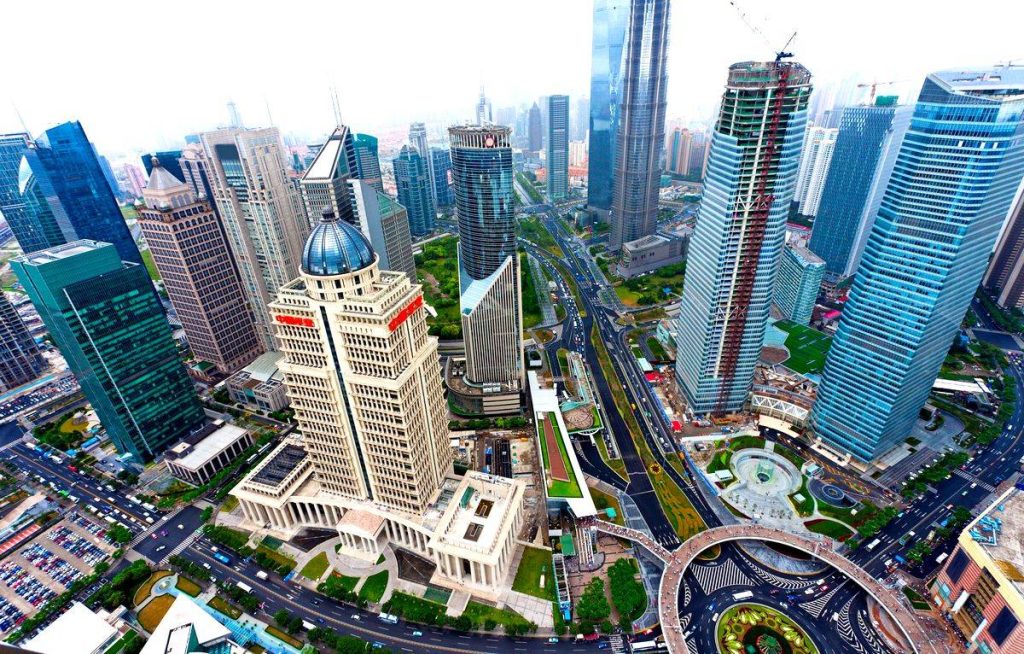THE ECONOMIC POWER OF CHINA: 75 YEARS OF IMPRESSIVE DEVELOPMENT

China’s economic development over the past 75 years stands as one of the most remarkable examples of transformation in global economic history. Since its establishment in 1949, the People’s Republic of China has evolved from an agrarian country with a devastated infrastructure into the world’s second-largest economy, playing a central role in the global economy and politics.
The Beginning of Economic Transformation
When the People’s Republic of China was founded in 1949, the country was in a state of ruin following many years of war and political instability. The GDP of the country was only 679 billion yuan in 1952, and at that time China faced severe economic challenges. The primary goal was to restore the economy and create a strong industrial base.
Industrialization and Reforms
One of the key stages in China’s economic transformation was the collectivization of agriculture and accelerated industrialization during the 1950s and 1960s. However, economic policies during this period were not always successful, leading to significant economic losses and humanitarian crises, including the Great Chinese Famine.
The situation began to change in the late 1970s when Deng Xiaoping initiated a program of economic reforms and opening up. In 1978, the gradual transition to a market economy began, marking the start of the “Chinese economic miracle.” Key elements of the reforms included the decentralization of economic policy, the development of the private sector, and the attraction of foreign investment.
Economic Growth and Globalization
By the 1980s, China began actively integrating into the global economy, leading to steady growth in GDP and exports. According to the National Bureau of Statistics of China, by 2023, the country’s GDP had surpassed 126 trillion yuan, making China the world’s second-largest economy. Economic growth was accompanied by a significant improvement in living standards. GDP per capita increased from 119 yuan in 1952 to 89,358 yuan in 2023, 89 times the 1952 level.
Contribution to Global Growth
China has become a leading driver of global economic growth. Since 1979, the country has demonstrated steady growth rates, significantly impacting the global economy. According to the World Bank, China accounted for about 17% of the world’s GDP in 2023. This was made possible by the active development of manufacturing capacities and increased exports. According to the National Bureau of Statistics of China, from 1979 to 2023, China’s contribution to global economic growth averaged 24.8% annually.
Leadership in Industry and High Technologies
One of the most important aspects of China’s economy is its leadership in manufacturing. China remains the largest producer of industrial goods and the largest exporter of electronics, mechanical products, and textile products. In 2023, the export of high-tech products continued to grow amid an overall transformation of the industry towards innovation and high-tech production.
According to the National Bureau of Statistics of China, since 2013, China has been actively increasing investment in scientific research and development (R&D). In 2023, R&D expenditures amounted to over 33.278 billion yuan, the second-highest in the world after the USA. It is noteworthy that the country has achieved successes in areas such as space technology, quantum computing, artificial intelligence, and renewable energy sources.
Social Achievements and Improvement in Living Standards
Economic growth was accompanied by improvements in living standards. The average income per capita increased significantly, and indicators of poverty and inequality decreased. According to the World Bank, by 2023, China had moved from the low-income category to the upper-middle-income category. An important indicator was the growth in real incomes: in 2023, urban incomes increased by 6.1%, while rural incomes grew by 7.6%.
Openness to the World
An important factor in China’s economic development has been its integration into the global economy and participation in international organizations. Joining the WTO in 2001 was a key event for Chinese foreign trade. By 2023, China remained the world’s largest exporter and importer, as well as a leader in the volume of accumulated foreign investments. Bilateral investments with other countries have become an important part of economic growth, allowing China to strengthen its position in international trade.
Challenges and Prospects
Despite significant achievements, China faces a number of challenges, such as the need to transition to more sustainable economic models, address environmental issues, and improve management efficiency. However, according to reports from the National Bureau of Statistics of China, the government is actively working on these issues, including through the development of green technologies and high-tech sectors of the economy.
In conclusion, over 75 years, China has demonstrated outstanding results in economic development. The country has transformed from a backward agrarian state into one of the largest and most dynamic economies in the world, playing a central role in the global economy and politics. GDP per capita has increased 89 times since the founding of the PRC, and China has become a leader in high-tech industries and manufacturing. The country continues to advance despite existing challenges, and its role in the global economy is expected to strengthen in the coming decades.
Source: https://www.stats.gov.cn/english/
China Studies Centre
